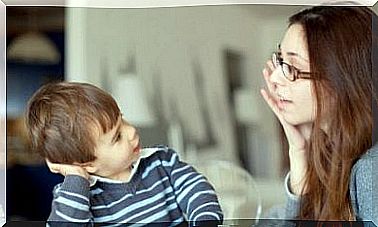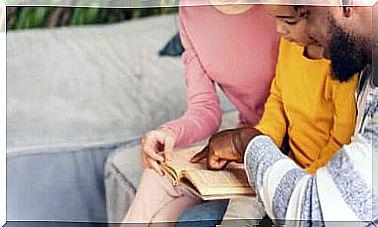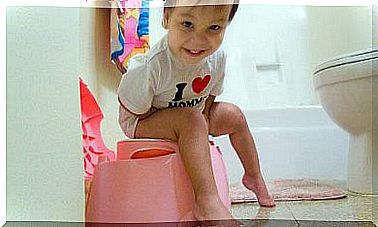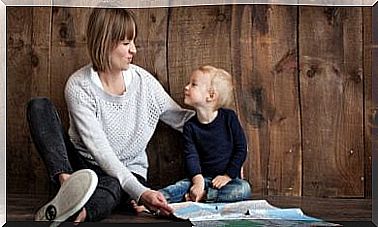What Is Landau’s Reflection?
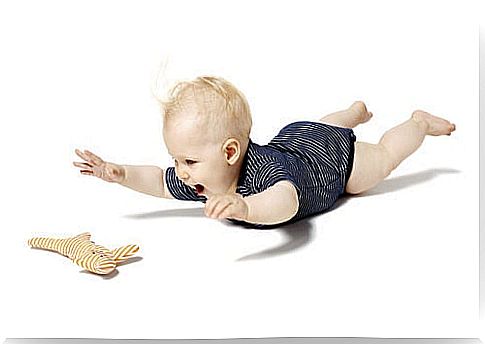
The Landau reflex is one of many reflexes that appear in a baby’s first few months of life. It is an expression, together with the appearance of other age-specific reflexes, of an efficiently functioning nervous system. Next, we review what the Landau reflex consists of, its characteristics and what other reflexes can be perceived in the baby’s first months of life.
Like any other reflex, the Landau reflex is an involuntary body response to a stimulus. Reflexes are acts that we have incorporated into our body. We carry them in our DNA, as their main function is to allow the person to adapt to the environment in which they are inserted and with which they interact.
They can be primal, meaning the ones we are born with, like the yawn, the sneeze or the blink of an eye. Or secondary, that is, those that we “learn” throughout our lives.
To check the Landau reflex, the baby is placed in a ventral position (on his stomach) over our arm, forming a right angle with our forearm. In this position, the baby should straighten the trunk and lift the extremities and head.
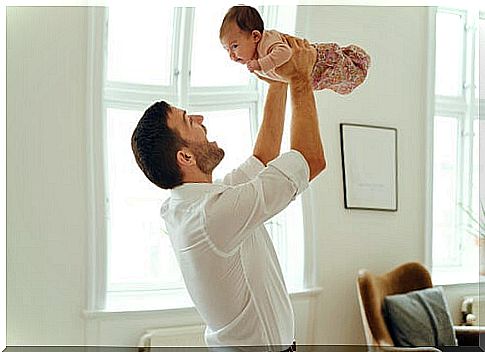
These movements are usually accompanied by bending the knees and elbows. What the baby tries to do with these actions is to neutralize the effect of gravity, while trying to look ahead to find a visual reference point.
Landau reflex properties
- It appears during the fourth month of life and disappears around the age of two. Despite this, many researchers consider that it disappears after the first year of life.
- Represents the combination of labyrinthine tonic, neck tonic and visual reflexes.
- As the baby develops voluntary and conscious movements, this reflex begins to become less noticeable.
- It is best practiced by an expert. There are two reasons: first, he will be able to assess the baby’s responses in the best way; second, if the person is not skilled at controlling the baby’s movement, the baby may fall when making some sudden or inappropriate movement.
What does the absence of a reflection mean?
The absence of this response may suggest the baby’s motor weakness. To improve this it will be necessary to exercise your motor development as needed. Or it could also indicate lesser mental maturation. The ideal, in these cases, is to ask the pediatrician for an evaluation.
Doctors examine the presence of these reflexes early in babies’ lives. This assessment is not only quantitative, but also qualitative. That is, not only the presence of a reflex is registered, but also its execution, even if totally involuntary.
If the expected reflection does not appear, it could be an indicator of a certain type of disability. If movement is weak, it may be a symptom of muscle weakness. If you are agitated, it could be the result of a withdrawal syndrome. Or, if it is asymmetric, it could be a sign of a clavicular or nerve root injury, among other possibilities.
Other secondary baby reflexes
The Landau reflex is not the only reflex characteristic of babies’ first months of life. Among the main reflexes, we can also highlight:
- Grip reflex. It occurs when the baby closes his hand to hold his finger or any object that comes close.
- March reflex. The baby tries to walk when his feet touch a hard surface.
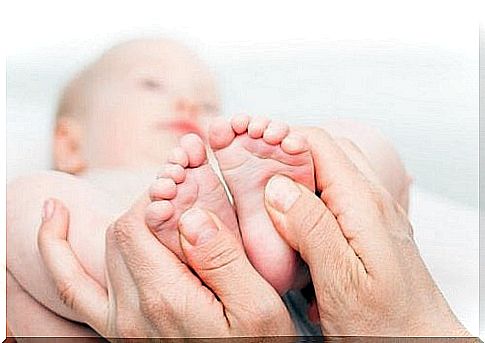
- Galant reflex. With the baby lying on his stomach, when a person caresses or pats one side of the spine, the baby turns to the side where it is touched.
- Abdominal reflex. Similar to above, but with the baby lying on its back. However, the abdominal region is stimulated. This stimulation should cause a curvature of the trunk.
- Drag reflex. The baby should be placed on its stomach. In this position, he will try to move his legs to start crawling. Normally, this reflex is present for up to three months of life, before the baby starts to crawl permanently.
- Crawl reflex. It occurs just when the anterior reflex is sufficiently developed. We should place the baby on his tummy on a firm surface that allows him to support himself. The little one will immediately react and put himself in the crawling position. This reflex appears around six or seven months and lasts until the child starts to walk.
- Finger extension reflex. When the baby has a closed hand, we can gently stroke the back of his hand from the little finger to the fist to make him open his hand. This technique can be very helpful in getting the baby to let go of something he has improperly grasped.
